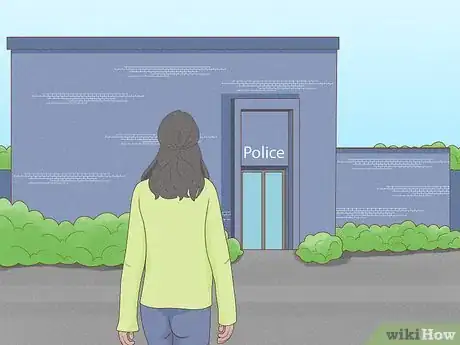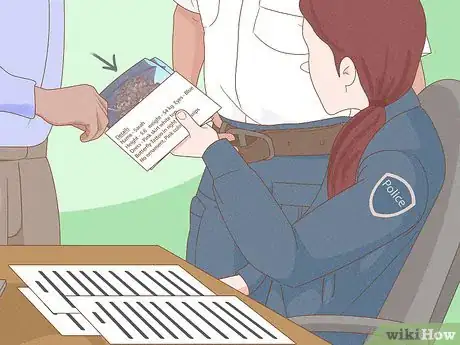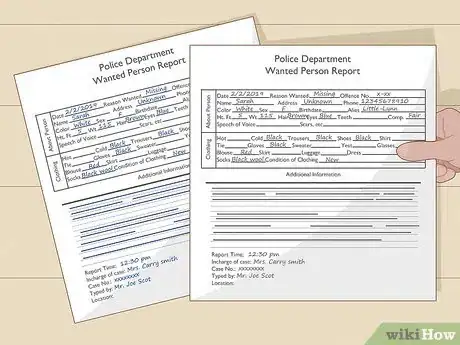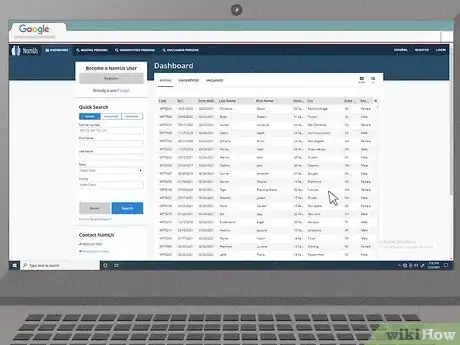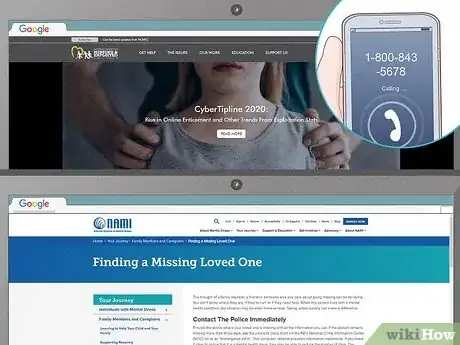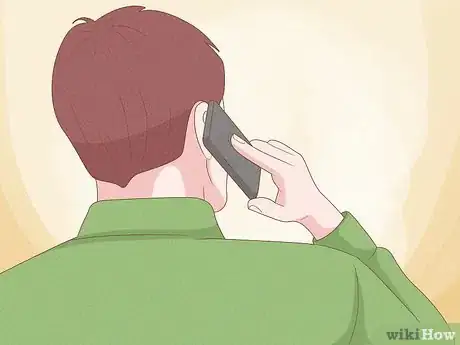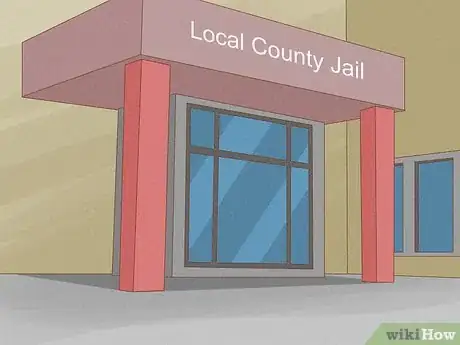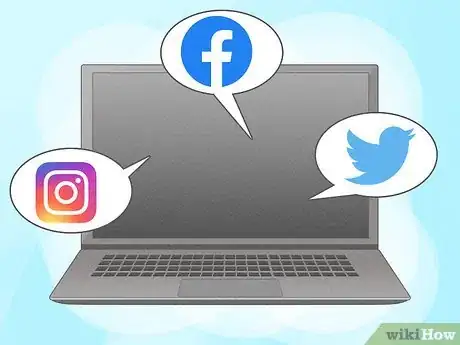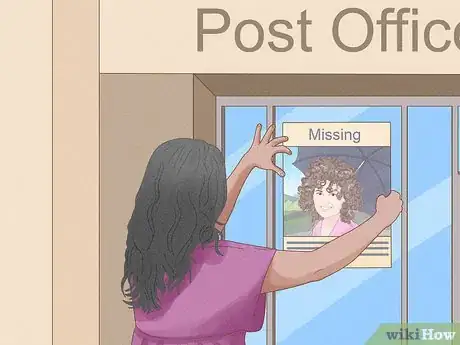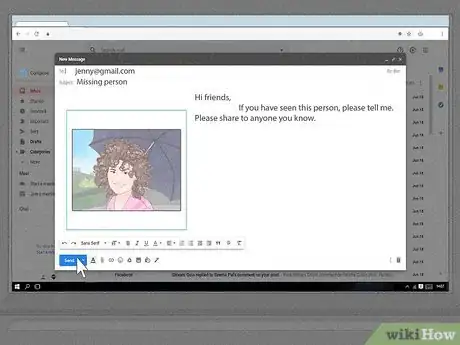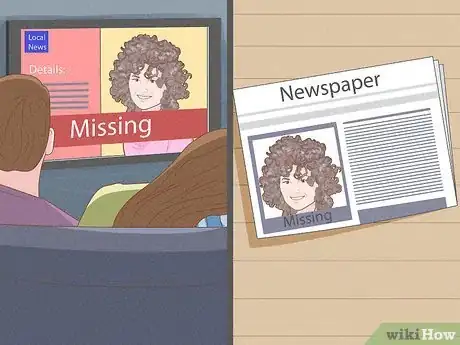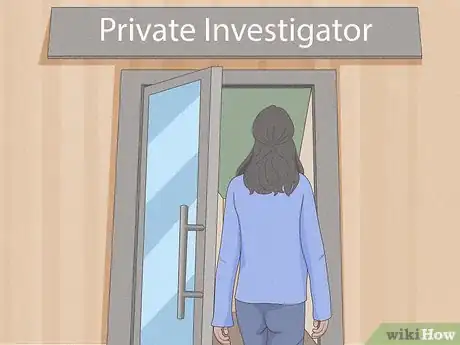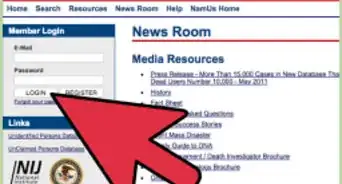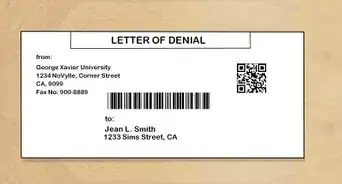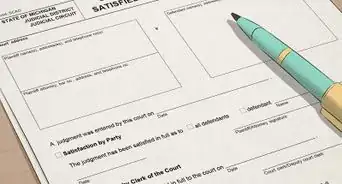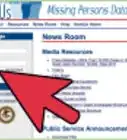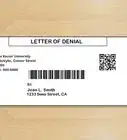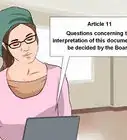This article was co-authored by Clinton M. Sandvick, JD, PhD. Clinton M. Sandvick worked as a civil litigator in California for over 7 years. He received his JD from the University of Wisconsin-Madison in 1998 and his PhD in American History from the University of Oregon in 2013.
wikiHow marks an article as reader-approved once it receives enough positive feedback. This article received 11 testimonials and 100% of readers who voted found it helpful, earning it our reader-approved status.
This article has been viewed 666,244 times.
When you believe a person in your life has disappeared, it's important to act quickly to set a search in motion. Start by calling the police department to file a missing persons report, then take measures to conduct your own search. If the person does not return home, you may need to alert the media and hire a private investigator. By taking the right steps quickly, you increase the chances of finding a missing person.
Steps
Reporting the Missing Person
-
1Contact the police as soon as you have reason to worry. You don’t have to wait a mandatory amount of time to file a missing person report.[1] The faster you notify the police that your loved one is missing, the faster they can begin searching. Go to your local police department to file a report.
- You should understand the limits of what the police can do, especially if the missing person is an adult. It is not usually illegal for a person to go missing.
-
2Provide the police with information about the missing person. To complete the missing persons report, you'll need to provide detailed information about the missing person's physical characteristics and last known location. Have the following information ready when you go to the police station to file the report:
- At least three recent photos of the person
- A list of nicknames or aliases used by the person
- A physical description, including height, weight, age, hair color, eye color, build, etc.
- A description of the clothing and shoes the person was last seen wearing
- A list of possessions the person might be carrying, such as jewelry, glasses, contact lenses, accessories, a purse, a wallet, ID cards, etc.
- A list of scars, tattoos, and/or any other identifying characteristics
- A list of medications the person takes, if any, as well as allergies, disabilities, and other medical conditions
- A list of relatives or friends of the missing person, along with contact information
- A list of places the person frequents
- A description of the person’s car or a different mode of transportation (a bicycle, for example) if applicable
- A description of the situation surrounding the person's disappearance
Advertisement -
3Keep a record of the report. Make sure you obtain a case number for your missing person's report. Write down the name of the person in charge of your case. Contact this person when you wish to follow up.
-
4Contact the National Missing and Unidentified Persons System (NamUs). The US Department of Justice operates this system. NamUs lets you upload information about a missing person for use by law enforcement officials, agencies, and individuals. The site helps missing persons cases wrap up sooner by providing this information to the public.[2]
-
5Register with other missing persons databases or review their resources. You can use other databases designed to help find missing persons, many of which are geared toward specific characteristics. Consider registering with additional databases to gain access to their free services and resources to help you find your missing person.
- The National Center for Missing and Exploited Children[3] specializes in providing services for families of children who are missing. After you have reported a missing child to law enforcement, you can call the National Center for Missing & Exploited Children at 1-800-THE-LOST(1-800-843-5678).
- The National Alliance on Mental Illness[4] provides resources for families of people with mental illness who have gone missing. Their website contains potentially useful materials, including suggested guidelines and forums.
Conducting a Search
-
1Contact the person's friends and acquaintances. Call the people in the missing person's life and ask when they last saw him or her. Determine if they know anything about the person's whereabouts. Besides friends, family members, neighbors, and classmates, call anyone who had regular contact with the missing person. This may include teachers, doctors, dentists, bus drivers, coworkers, and neighbors.
- Keep a log of the people to whom you've spoken and what they had to say about the missing person. Keep it updated with as much detailed information as possible.
- Encourage people to call you back if they find out more information from another source.
- Report new findings to the case worker in charge of your missing person’s case at the police department.
-
2Check with hospitals and coroners in the area. If the missing person was in an accident, he or she might be in a local hospital and unable to communicate for some reason. In some tragic cases, a missing person will be found with a coroner or medical examiner. Call all the facilities in your area to rule out these possibilities.
- When you make the calls, ask for the missing person by name.
- If no one by that name is on record there, ask if they have unidentified people in their care who resemble your missing person.
-
3Check with your local county jail. If the missing person had an encounter with law enforcement that led to an arrest, he or she may be in a local county jail. Check with local law enforcement offices to see if the missing person is incarcerated. You may also be able to check online using the “inmate locator” option on your local law enforcement’s website.[5]
-
4Check social media sites. This is an important way to gain information about the days leading up to the person's disappearance. Check his or her Facebook, Twitter, Instagram, and other accounts. Determine whether recent activity contains any clues. Look at the missing person's friends' accounts as well.
- Print out correspondence and activity that seems as though it could lead to the missing person's location.
- Report any activity that might be a clue to the case worker at the police department.
-
5Put up fliers with a picture and description of the missing person. Often, the missing person will see the fliers and decide to return home. Fliers can also alert friends and neighbors who might have information about the person's whereabouts. Put up the fliers in the neighborhood where the missing person lived and around places where he or she spent time.
- Hang your fliers in prominent locations. Gas stations, grocery stores, post offices, banks, drug stores, local libraries, churches, hospitals, homeless shelters, parks, and hiking trails will all work well.
- Be sure to include a recent, clear photograph of the missing person.
- Include the person's age, a physical description, and the date they went missing.
- Include contact information as well.
Involving Others
-
1Ask people to spread the word. Send out an email with a picture of the missing person and a request to pass the word around. Post a picture and description of the missing person on your social media pages and ask people to share. The more people who become aware that you're looking for a missing person, the better the chances of finding him or her.
-
2Alert the local media. Getting the media involved is another important way to publicize the fact that you're looking for a missing person. The person may see the announcement and decide to return home. Others will look out for the missing person as well. With media involved, local police may devote more resources to solving the case.
- Send photos and videos of the missing person to your local TV stations.
- Call your local newspapers, and ask them to publish an article on the missing person.
- Take out an ad in a weekly newspaper.
- Send information to local blogs and websites.
-
3Consider hiring a private investigator. A private investigator, unlike the police department, will spend as much time as you want investigating your case. If you have the money, hiring an investigator is a good way to keep the search going when police are no longer spending as much time on it. Research private investigators in your area and work with one to find your missing person.
References
- ↑ http://missingpersonsofamerica.com/2011/03/06/when-can-you-report-a-person-missing/
- ↑ https://www.findthemissing.org/en
- ↑ http://www.missingkids.com/home
- ↑ http://www.nami.org/Find-Support/Family-Members-and-Caregivers/Finding-a-Missing-Loved-One
- ↑ http://www.lapdonline.org/lapd_adult_missing_persons_unit
- ↑ http://www.amberalert.gov/faqs.htm
About This Article
To find a missing person, start by contacting the police so they can begin looking for the person as soon as possible. Additionally, ask the person’s friends and family if they have any information, and call nearby hospitals and jails in case the person’s been injured or is being held by the police. You should also check the missing person’s social media sites, such as Facebook and Twitter, to get clues as to where they are. If the person is a child, you may want to consider registering with an organization like the National Center for Missing and Exploited Children. For more tips from our Legal co-author, like how to post flyers or alert local media to spread the word about your missing person, read on!
